As you drive down South Mumbai, it’s almost ritualistic to enter a spotting game: Where is Antilia? You look for its monumental silhouette, a peek of its columns, a sliver of its unmaskable presence. No matter who you are or where you come from, you cannot escape the thrill of catching a glimpse of the alleged 2 billion dollar house. Yet, when you eventually find yourself on Altamount Road in the company of affluent residences, the Ambani house appears akin to a mystery.
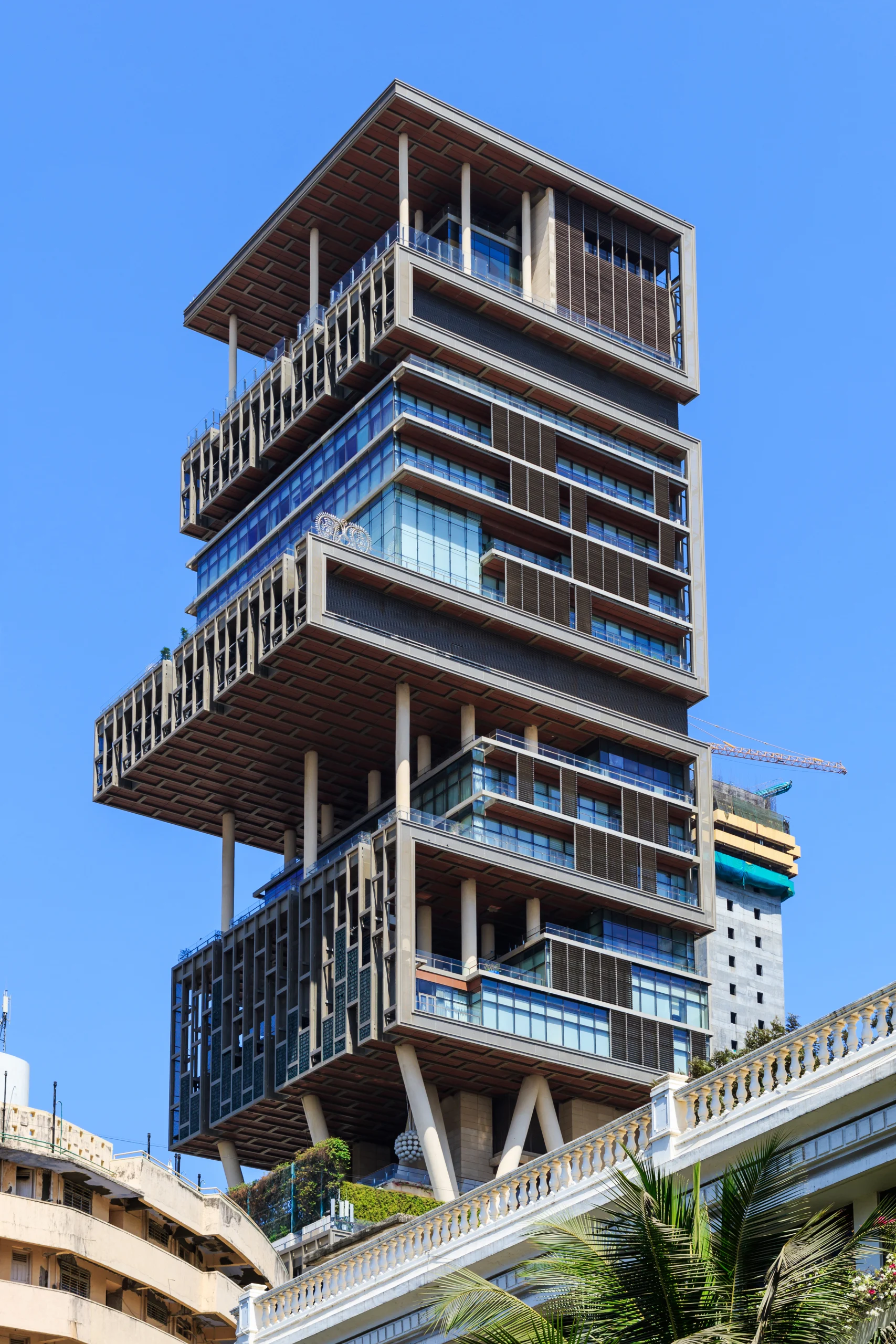
Since it came to life in 2011, Antilia has been surrounded by stories, much like the mythical island it was named after. An elusive faraway land rumoured to exist in the Atlantic Ocean that mysteriously appeared on 15th-century Portuguese and Spanish maps. You can draw countless parallels between the two Antilias. The narrative similarities are clear as day.
While the isle of antiquity has faded into cartographic obscurity, the tower designed by Perkins & Will has made its mark on the Maximum City. A collective fantasy that stands squarely in material assertion. But keeping aside the lauders, naysayers, and the clamour of criticism, what do we know about Antilia outside of its provocation? And why is it important that we still talk about it more than a decade later?
Who lives in Antilia?
To understand what the 37,160 sq m towering giant means to a country of more than half a billion, we need to know the story of the family who inhabits it. The chairman and managing director of Reliance Industries, Mukesh Ambani, was born in 1957 to industrialist Dhirubhai Ambani, inheriting his corporate empire. But the journey to becoming one of the most influential figures of global business (and the richest man in India) is entirely his own.
After years of living in his apartment in Cuffe Parade, a few kilometres from where Antilia stands today, where he stayed with his extended family, Ambani sought out a more private residence that also reflected the scale of his ambitions. In cities, more so in Mumbai, real estate is the ultimate symbol of power. And many would say, the address you occupy is a marker of arrival.
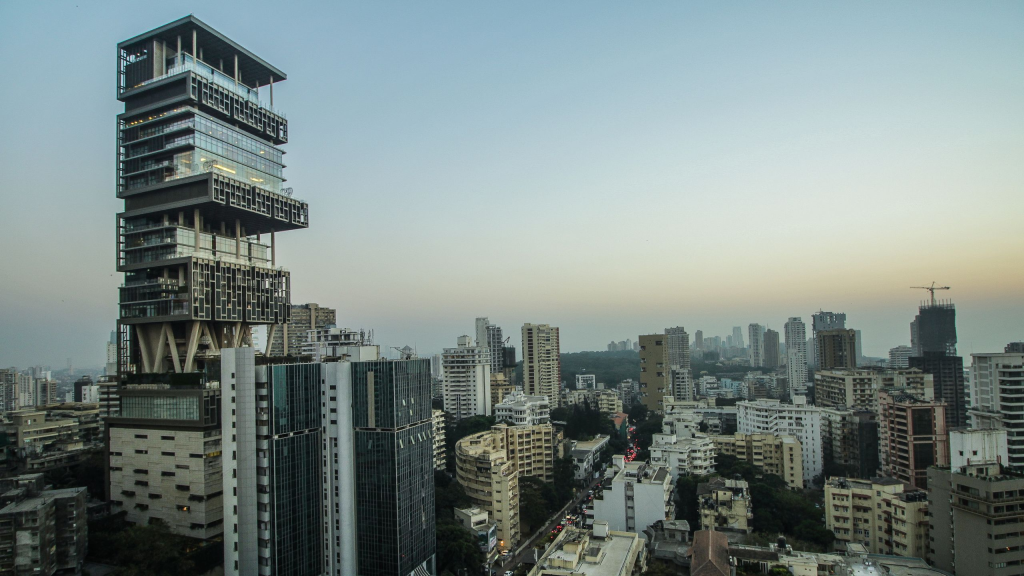
A model for a sustainable future?
In an interview for the Architectural Record, Ralph Johnson of Perkins & Will calls the tower “a prototype for buildings of the future,” pointing to its band of vertical and horizontal gardens that delineate programme zones while offering shade and mitigating the urban heat island effect. Panels with hydroponically grown plants act “almost like a tree,” Johnson says, multiplying the greenery well beyond what a traditional green roof could offer.
A garden level midway up the tower separates the corporate areas from the residential floors and parking. Known for his penchant for automobiles, six floors of the building forming a datum are dedicated to a fleet of cars. In Antilia, sustainability becomes a luxury amenity, less about collective ecological responsibility and more about personalised, curated comfort.
Much of what is contained within its 173.7 metre shell still remains a mystery, presenting itself to be read mostly through its external form. Standing tall with high walls and a dominating silhouette in the skyline, the building is oriented and designed to maximise natural light, reducing reliance on artificial illumination during daylight hours. Energy-efficient materials and systems have been integrated to help lower its carbon footprint.
Vertical gardens soften the façade while serving a functional purpose: regulating interior temperatures and decreasing dependence on air conditioning. In a city like Mumbai, where air quality is a pressing concern, these green pockets contribute not just to the building’s aesthetic but to its environmental footprint as well. Antilia also incorporates water conservation systems, including rainwater harvesting and wastewater recycling. In combining ecological awareness with opulence, the building gestures toward a future where luxury and environmental responsibility are no longer mutually exclusive.
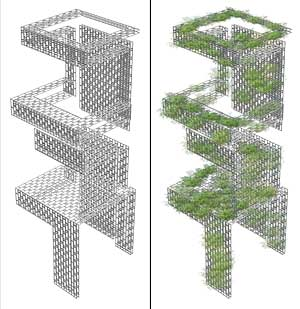
A sound structural feat
What often gets lost in the discourse about Antilia is its remarkable structural feat. Initially planned as a steel structure by Arup, construction challenges led to a redesign in reinforced concrete by Sterling Engineering, ensuring the original architectural vision remained intact. One of Antilia’s defining structural features is its advanced earthquake resistance, considering its location in a seismic zone.
Set on a 3-meter-thick raft foundation, the design accommodates complex structural requirements like a column-free ballroom with 25-tonne chandeliers suspended from a platform above. The building includes six parking levels, entertainment zones, vertical gardens, health clubs, guest suites, and family residences. Additional features include an observatory, library, helipad, and multiple refuges and mechanical floors.
Structural innovation was key: a tilted core corrected anticipated dead-load shift, and 22-meter-tall inverted pyramid columns required custom staging. Wind tunnel tests helped refine the building’s stiffness to reduce motion. Despite immense complexity, Antilia stands as a feat of contemporary engineering and architecture, pushing conventional boundaries to create an architectural marvel that is both technically ambitious and symbolically grand.
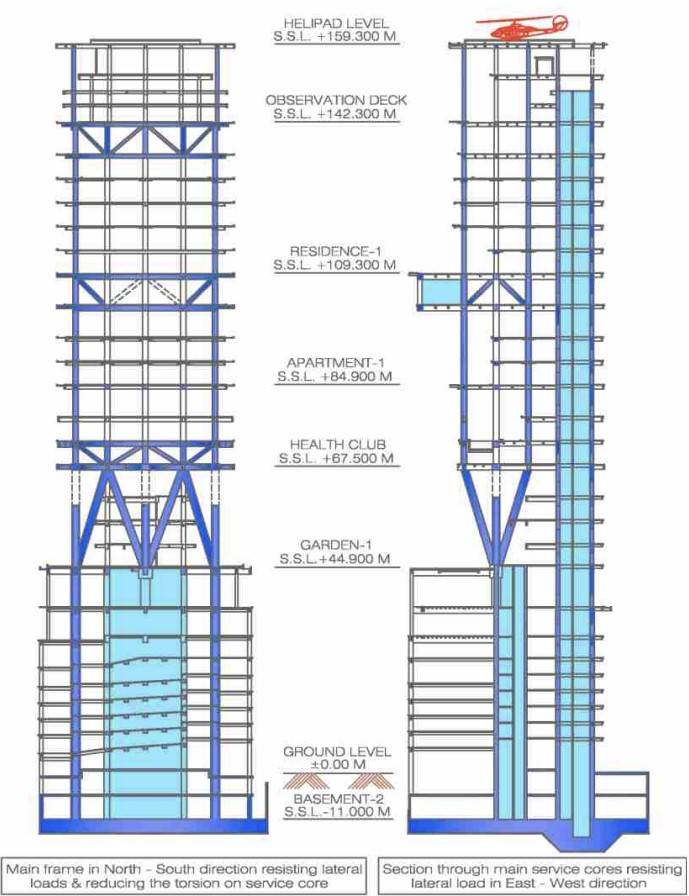
Functions that sound like fiction
A snow room, multiple helipads, a ballroom, and reportedly a staff of over 600 people. Drawing inspiration from the Hanging Gardens of Babylon, Perkins & Will designed a home that embraces a sense of grandeur. “The spectacle is not a collection of images, but a social relation among people, mediated by images,” said Guy Debord in his 1967 book The Society of the Spectacle. A vertical explosion of possibility. While Mukesh Ambani himself has never appeared in public interviews about Antilia, his wife Nita Ambani told the BBC in 2012, “It’s a modern home with an Indian heart.”
Antilia’s scale, location, and materials extend beyond purely aesthetic considerations. Situated on one of Mumbai’s most expensive plots in the Billionaire’s Row, the house rises above the city, offering panoramic views while maintaining privacy from the street. Though its interiors and structural ingenuity have received attention, the stacked built form has also been subject to debate, particularly concerning land acquisition and prevailing social norms.
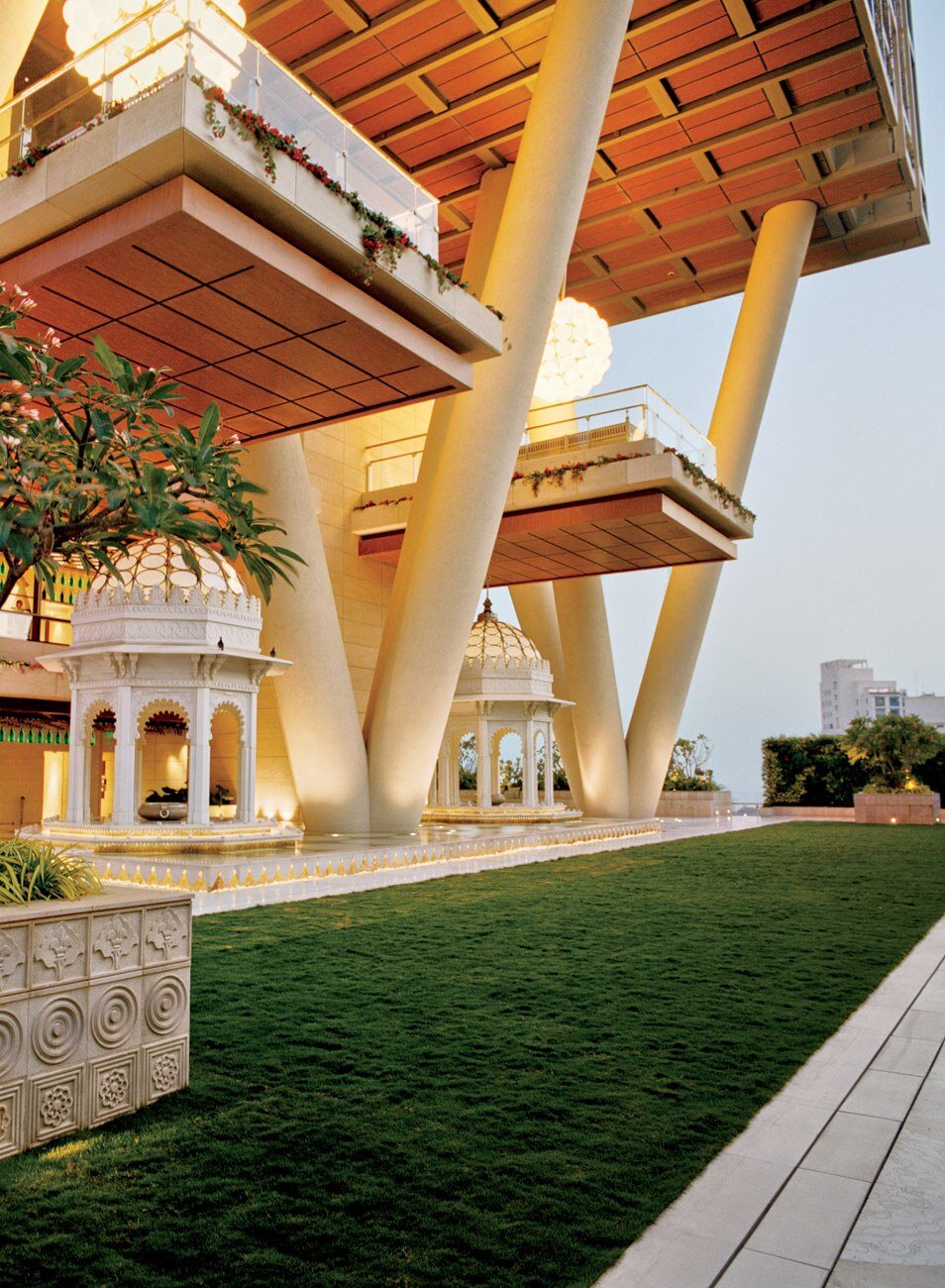
Word on the street
From the numerous reports and coverage, it is not difficult to gather that Antilia brings together a range of aesthetic styles into a singular, vertical form. Its façade shifts between sleek glass surfaces and verdant overhangs, with references to traditional temple architecture and contemporary opulence, including crystal chandeliers. The spaces inside are richly detailed, featuring gold leafing, hand-painted murals, lotus and sun motifs, and intricately carved jaalis. Rather than adhering to a singular architectural language, the building presents a layered composition as an example of contemporary maximalism shaped by diverse influences.
Criticism of Antilia often centres on its scale and visual extravagance in contrast to its surrounding urban fabric, particularly given Mumbai’s socioeconomic disparities. However, Antilia exists within a long-standing tradition of architectural expressions of wealth and power, both globally and locally. Its presence reflects broader questions about visibility, aspiration, and the role of private architecture in the public imagination. On the other hand, a more impartial reading can portray Antilia for what it is: an investigation into verticality. In a city where land itself becomes a commodity, an architectural experiment such as this showcases a possibility of the future, a self-sufficient tower, reminiscent of Le Corbusier’s Unité d’Habitation.




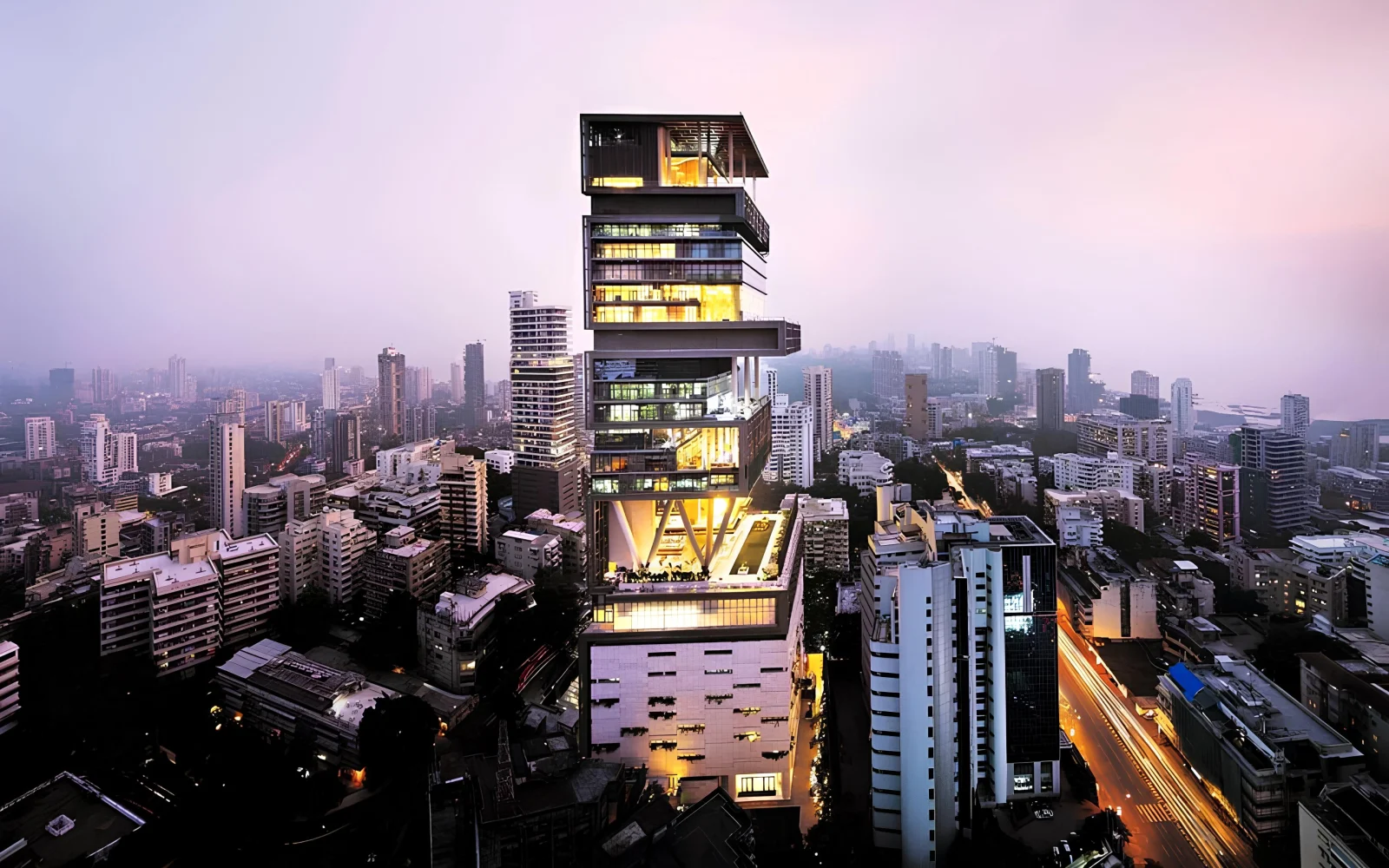






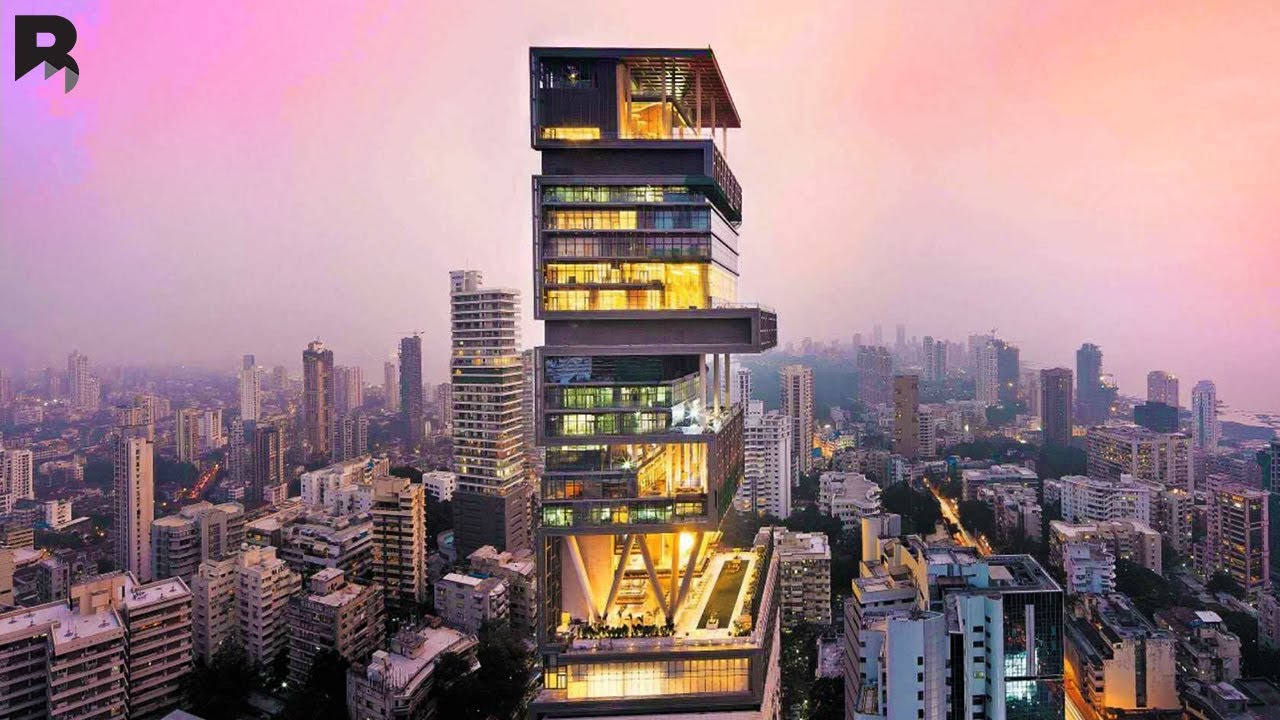
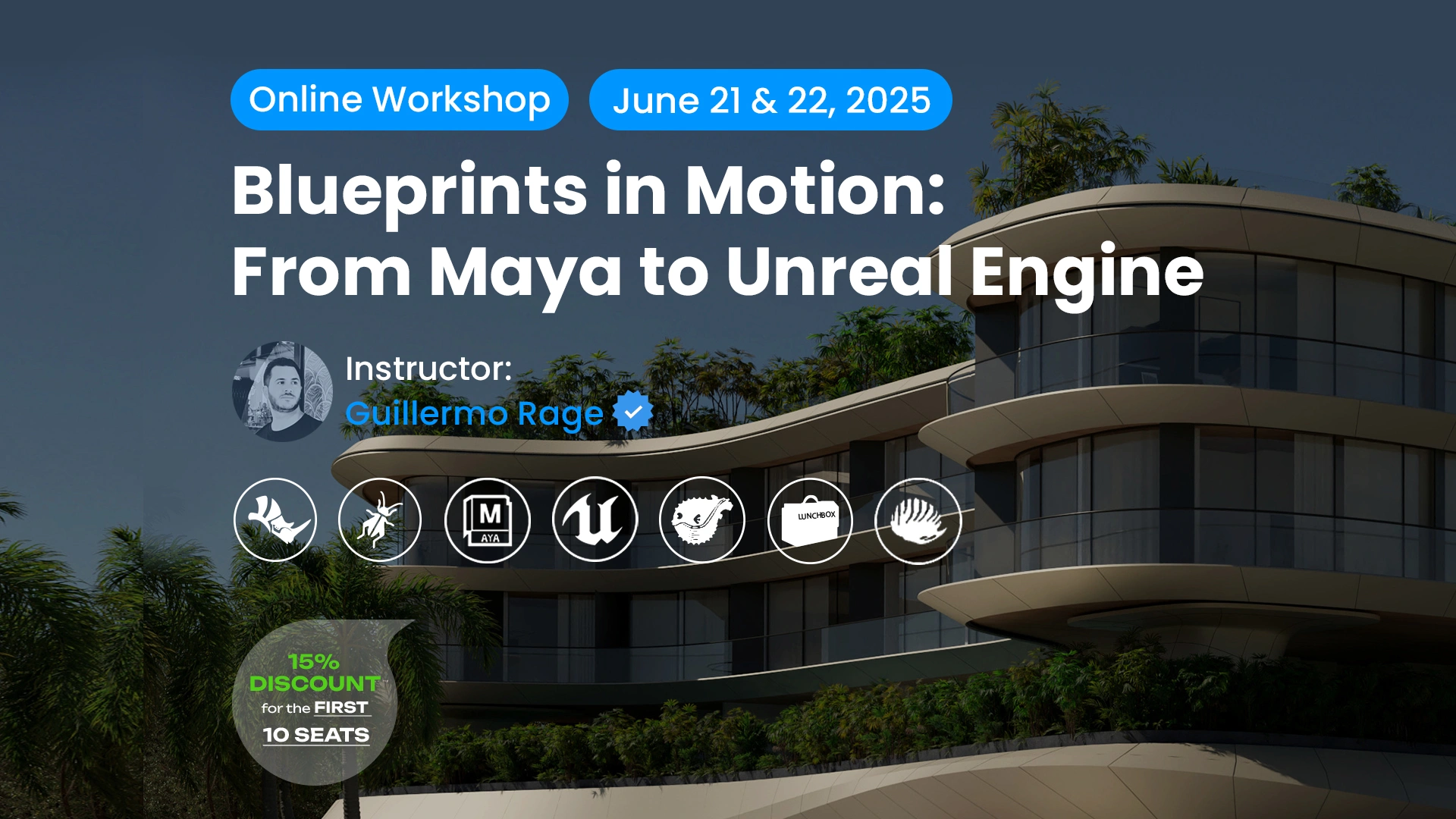






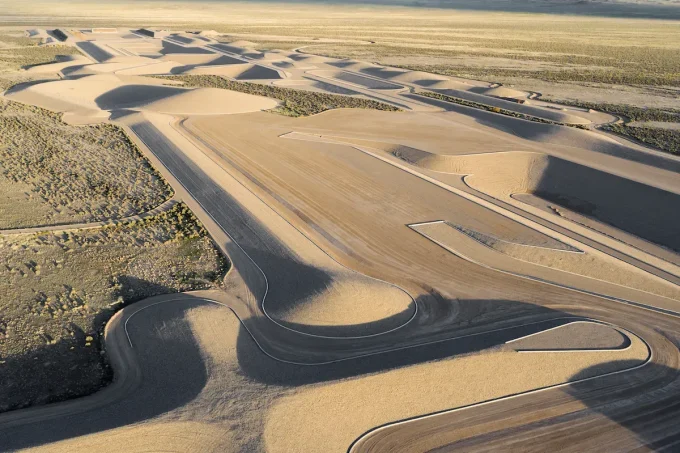





Leave a comment